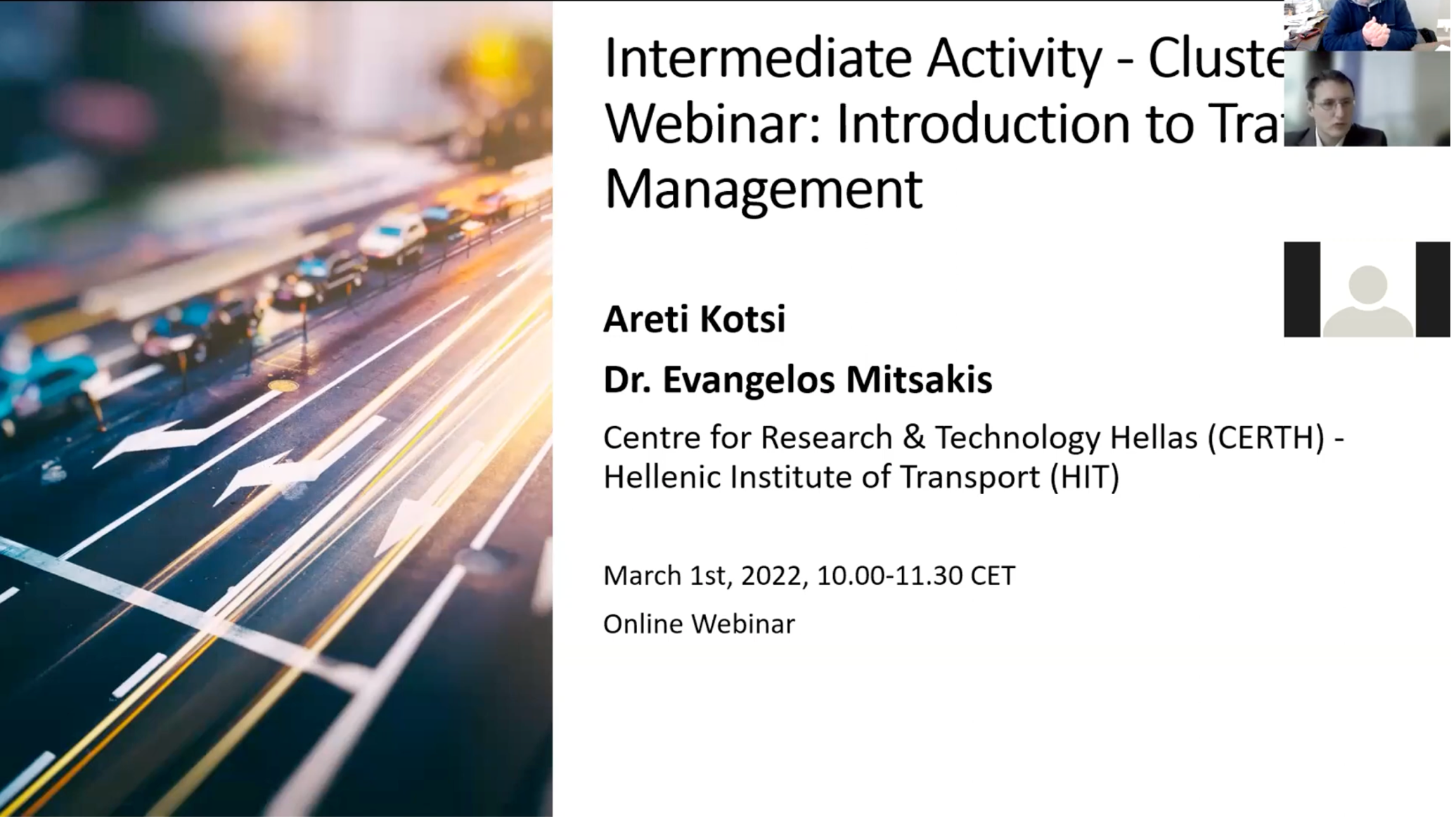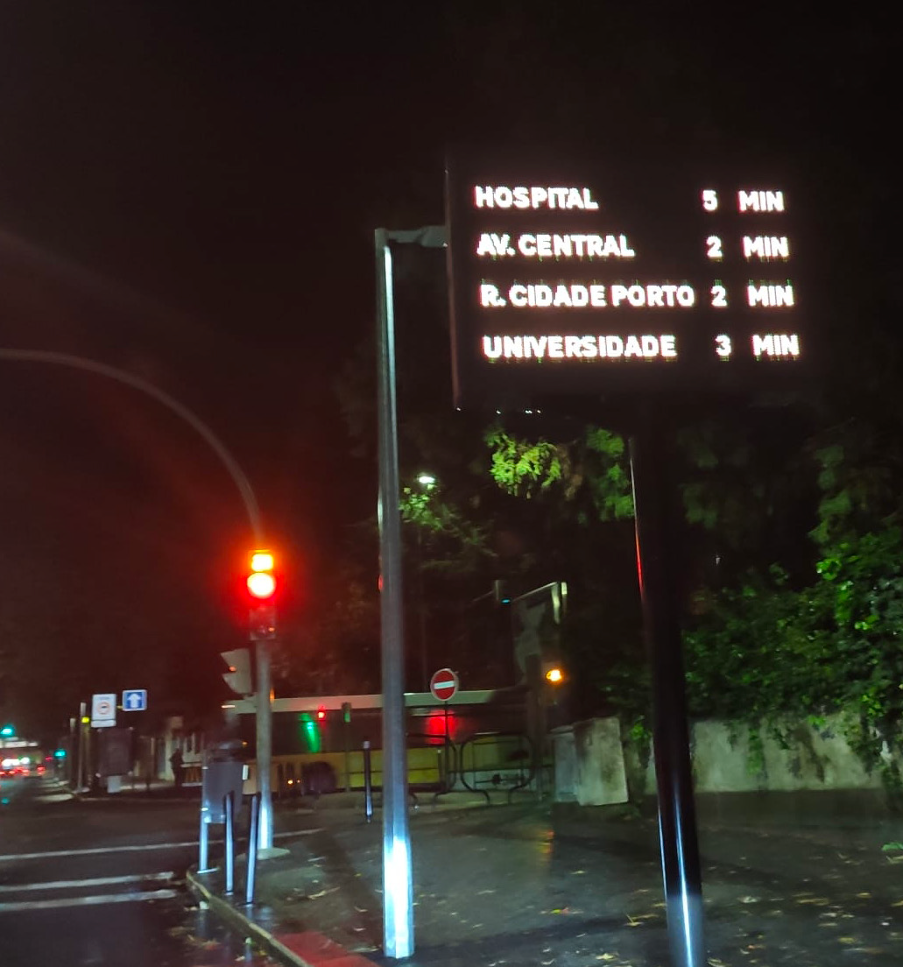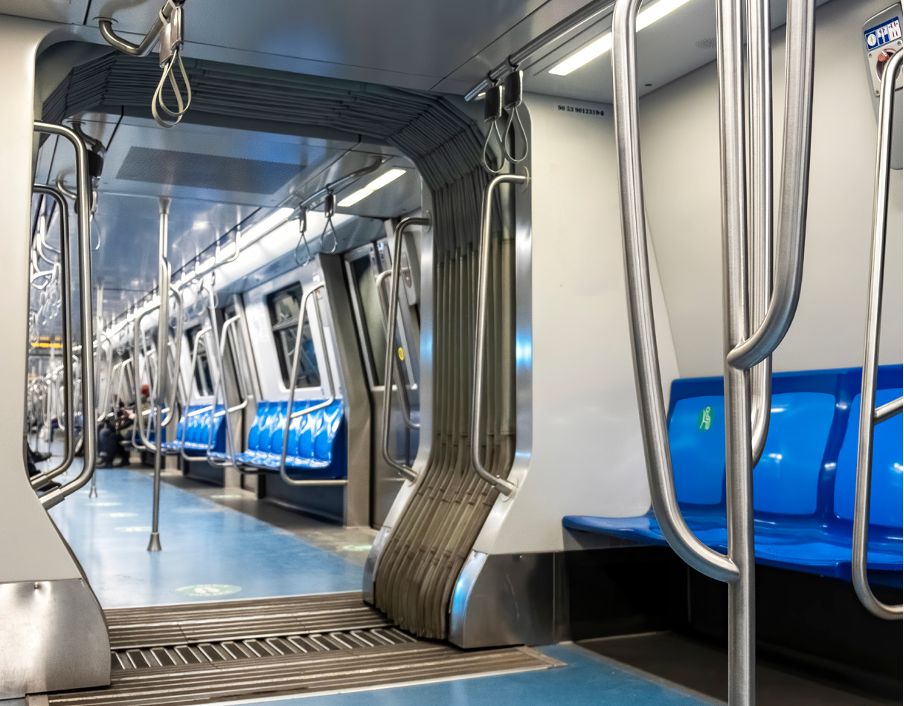Topic outline
Traffic and Demand Management

FastTrack cities explored innovative ways of managing multi-modal traffic, through the implementation of traffic management centres, MAAS systems which will enhance the use of the sustainable transport modes, as well as integrated databases including all the data needed for the sustainable mobility planning which will divert and reduce car traffic in cities.

This document highlights major insights from the Traffic and Demand Management cluster and cross-cutting theme of FastTrack.
FastTrack webinar: introduction to traffic management

Traffic management and control core elements and principles: Funding of ITS projects / EU policies / Cost benefit analysis and impact assessment of ITS projects / Business and governance models for sustainable ITS / Data repositories and data exchange / Future trends and developments.
 Dr. Georgia Ayfantopoulou, (2021): General trends and policies in traffic and demand management for sustainable
mobility, presentation in FastTrack CBW1 .
Dr. Georgia Ayfantopoulou, (2021): General trends and policies in traffic and demand management for sustainable
mobility, presentation in FastTrack CBW1 .
Traffic management and control core elements and principles

This section provides information about traffic management starting from the theoretical focusing on innovative technologies for smart cities, such as ITS and connected vehicles.

The purpose of this paper is to present a comparison between the implementation of smart city approach in different locations from Romania.
Pop, M. D., Proștean, O. (2018). A comparison between smart city approaches in road traffic management. Procedia- social and behavioral sciences, 238, 29-36.
Recommendations and guidelines for stakeholders involved in the Traffic Management evolution towards a European TM2.0 ecosystem.
Spoelstra, J., van Waes, F., Mann, M., Konstantinopoulou, L.,Tzanidaki, J. (2017). Exchanging Traffic Management Plans data between Traffic Management Centres and Service Providers in Traffic Management 2.0.
Funding of ITS projects

This section provides an overview of the most important funding programmes for ITS projects in EU.

Research and innovation funding programme until 2027. How to get funding, programme structure, missions, European partnerships, news and events.
https://research-and-innovation.ec.europa.eu/funding/funding-opportunities/funding-programmes-and-open-calls/horizon-europe_en
The digital part of the Connecting Europe Facility (CEF Digital) will support and catalyse both public and private investments in digital connectivity infrastructures between 2021 and 2027.
EU policies

This section provides information on the policy EU policy framework for ITS, smart mobility, and connected vehicles.

Directive 2010/40/EU of the European Parliament and of the Council of 7 July 2010 on the framework for the deployment of Intelligent Transport Systems in the field of road transport and for interfaces with other modes of transport Text with EEA relevance.

COMMUNICATION FROM THE COMMISSION TO THE EUROPEAN PARLIAMENT, THE COUNCIL, THE EUROPEAN ECONOMIC AND SOCIAL COMMITTEE AND THE COMMITTEE OF THE REGIONS. Sustainable and Smart Mobility Strategy - putting European transport on track for the future.

CCAM Partnership - The 23 June 2021 saw the officialization of the CCAM Partnership – co-Programmed with the European Commission in the Horizon Europe Framework thanks to the Memorandum of Understanding signature between the concerned parties.
Cost benefit analysis and impact assessment of ITS projects

This section provides information on the concepts of cost-benefit analysis and impact assessment for ITS and connected vehicles technologies.

Mitsakis, E., and Kotsi, A. Costs and benefits of bundled C-ITS services. The C-MobILE approach

The main purpose of this Handbook is to provide guidelines for conduct of FOTs (Field Operational Tests) and NDS (Naturalistic Driving Studies).

Lu, M., Turetken, O., Adali, O. E., Castells, J., Blokpoel, R., and Grefen, P. W. P. J. (2018, September). C-ITS (cooperative intelligent transport systems) deployment in Europe: challenges and key findings. In 25th ITS World Congress, Copenhagen, Denmark (pp. 17-21).
Business models for ITS

This section introduces business models for ITS and C-ITS services based on a novel concept of service-dominant (rather product-dominant) approach - value is in the use of services and not products.

C-MobILE aims to stimulate / push existing and new sites towards large-scale, real-life C-ITS deployments interoperable across Europe. Well-defined operational procedures will lead to decentralized and dynamic coupling of systems, services and stakeholders across national and organizational borders in an open, but secure C-ITS ecosystem, enabled by different access technologies which provide transparent usage for service providers and seamless and continuous experience for the end-users across different transport modes, environments and countries.

TheSuratno, B. (2020). A method for operationalizing service-dominant business models. [Phd Thesis 1 (Research TU/e / Graduation TU/e), Industrial Engineering and Innovation Sciences]. Technische Universiteit Eindhoven.
Governance models for sustainable ITS (incl. Traffic Management as a Service)

This section introduces the concept of Traffic Management as a Service (TMaaS), a novel approach suggesting centralized solutions, and a best practice is presented through implementations in the city of Ghent.

Van Gheluwe, C., and Hendrikse, S. (2020). TMaaS, a new cloud-based, vendor-neutral multimodal traffic management solution. In 2020 Annual POLIS Conference: Innovation in Transport for Sustainable Cities and Regions.
Data repositories and data exchange

This section describes the concept of National Access Points (NAPs) and provides information also on DATEXII which is the most typical standard for data exchange in the domain of ITS. Also the TMex protocol is presented, which is a standard for data exchange between traffic management centers.

This paper aims to ascertain the role of a NAP within the ITS ecosystem, to investigate methodologies used in designing such platforms, and, through the drafting of an extended use case, showcase a NAP’s operational process and associate possible benefits with specific steps of it.
Aifantopoulou, G., Mylonas, C., Dolianitis, A., Stamelou, A., Psonis, V., and Mitsakis, E. (2020). National Access Points for Intelligent Transport Systems Data: From Conceptualization to Benefits Recognition and Exploitation. arXiv preprint arXiv:2010.12036.
DATEX II is the electronic language used in Europe for the exchange of traffic information and traffic data.
Future trends and developments

This section introduces the major future trends in the domain of ITS and connected vehicles which are Artificial Intelligence (AI) and socially aware traffic management.

This paper deals with concept of artificial intelligence, main reasons for successful growing of AI at present and main areas of AI using in transportation.
Šusteková, D., and Knutelska, M. (2015). How is the artificial intelligence used in applications for traffic management. Machines. Technologies. Materials., 9(10), 49-52.
Dr. Sven Maerivoet. Artificial Intelligence and Traffic Systems.
Cross-cutting themes
Based on FastTrack Needs Assessments, the FastTrack Local Affiliates are working in four topical clusters. This will enable them to exchange specific insights in the areas where they most need innovative solutions that foster more sustainable transport and mobility. In addition, FastTrack has identified four cross-cutting themes relevant to all FastTrack Affiliates and Ambassadors. These themes will be integrated into and explored by all FastTrack clusters.

Mobility and transport systems have huge impacts on our daily lives. They shape our behaviours and choices regarding where to live, shop, work, and how to spend our leisure time. Behaviour change must go hand-in-hand with new innovations in order to swiftly and sufficiently transform our mobility and transport systems to be sustainable in the long-term. The FastTrack Community will consider how innovations will change behaviours, as well as how local behaviour change can support speeding-up the uptake of innovations.

Reliable data is critical to influence decision-making, secure buy-in, move forward with swift implementation, and monitor sustainable mobility innovations. Often, relevant data spans several areas, groups, modes of transport, and more. This breadth of data is not always available, easily managed, or comparable. Furthermore, collecting mobility and transport data can be challenging, due to privacy concerns, as well as challenges working with the private sector, who may be reluctant to share commercially-sensitive data. Innovative data platforms are needed, which bring all types of mobility data together, and make this available to public and private stakeholders. Furthermore, innovative approaches to digitalisation and data management may be relevant to all local authorities, across all facets of sustainable mobility and transport.

Even the most ambitious and proactive local authorities will struggle to implement innovative solutions without appropriate funding. Furthermore, new business models and financing schemes can themselves be innovations with far-reaching potential impact. Both of these components – namely, funding innovative solutions, and new financing schemes as innovative solutions – are relevant to all FastTrack local authorities, and will be considered across all clusters.

New solutions will, simply put, not be successful in the long-term without the buy-in of local communities. New governance arrangements that foreground participation and cooperation are needed to ensure that mobility and transport systems are transformed as soon as possible, and in a sustainable and long-lasting manner. Similarly to other FastTrack cross-cutting themes, 'governance, participation and cooperation' can be seen as critical to innovative mobility solutions in two ways: firstly, FastTrack local authorities will explore governance and participation arrangements that support the speedy implementation of mobility solutions; secondly, new governance schemes will be explored as mobility innovations in and of themselves.
CASE STUDIES
Case Studies into eight FastTrack cities highlight the road to sustianable mobility innovation deployment

Located in the north-western region of mainland Portugal, Braga is situated in the Cávado Valley. Administratively, the municipality of Braga is the capital of the Braga district, which comprises a total of 37 parishes. Situated on an important road axis, the city has experienced great economic, social and cultural development. By signing the Covenant of Mayors for Climate and Energy, the Municipality of Braga has committed itself to supporting the implementation of the 40% greenhouse gas reduction target by 2030, the reduction of energy poverty and the creation of a long-term vision to achieve climate neutrality by 2050.

Bucharest, the capital of Romania, has about 1.800.000 inhabitants and is located in the southern part of the country. The city is surrounded by Ilfov County with its 300.000 inhabitants. The Intercommunity Development Association for Public Transport Bucharest-Ilfov (TPBI) covers both the city and the county. The Association was set up in 2018 and since then has undertaken mobility planning at the urban and functional urban area level, coordinating the interests of many smaller peri-urban and rural municipalities as well as the capital city.
State-of-the-Art Cases
This FastTrack tool highlights State-of-the-Art cases that showcase how local areas have sped-up their roll-out of sustainable mobility innovations.
FastReads
One page summaries of key FastTrack products to help you navigate our wealth of outputs.
To ensure that FastTrack's work is effective and scalable, it is important to assess how the project transfers knowledge to its local areas, and how this knowledge increases local capacities, and improves innovation implementation. FastTrack is also using "Innovation Performance" assessment to gauge its local areas' capacities to swiftly roll-out innovations, and to help identify factors that may enhance innovation capacity at the local level. Deliverable 4.1 presents FastTrack's novel assessment approach.
To ensure that FastTrack's work is effective and scalable, it is important to assess how the project transfers knowledge to its local areas, and how this knowledge increases local capacities, and improves innovation implementation. FastTrack is also using "Innovation Performance" assessment to gauge its local areas' capacities to swiftly roll-out innovations, and to help identify factors that may enhance innovation capacity at the local level. Deliverable 4.1 presents FastTrack's novel assessment approach.
At the very beginning of the FastTrack project, the needs of the 24 FastTrack Local Areas were assessed via an online survey and interviews. Delivearble 1.2 summarises the findings from that Needs Assessment. We overview the areas’ planning contexts and recent success stories, before going into more details about the innovative solutions each area plans to deploy within FastTrack; local drivers and barriers for innovation; and areas’ specific learning needs.
FastTrack is building up local authorities’ capacity to help speed up the roll-out of innovations that can help them forge more sustainable mobility and transport. Any project this ambitious must have a clear set of methodologies to build the necessary capacity. FastTrack’s capacity building handbook sets up the methodological framework for all capacity building activities carried out within the project, which aim to support peer-to-peer exchange between local areas.
FastTrack has an ambitious goal: the project is using a suite of interrelated methods to help local authorities to speed up their roll-out of innovations that can help them forge more sustainable mobility and transport. Any project this ambitious must have a clear set of structures in place that can support the project to ensure that it is effective – both with respect to its internal working, and that it is effective in accomplishing its external goals.
Cities across Europe and beyond have established high-level objectives to tackle the negative consequences of climate change. These new very ambitious objectives require an innovative approach. The innovation in implementing sustainable mobility solutions is at the core of the FastTrack project. This report summarises a programme of actions to be undertaken by each city involved in FastTrack for the remainder of the project and beyond. This actions’ program is facilitated by the tools and methods developed and applied by FastTrack project partners and provides cities with knowledge and tailored assistance on the effective deployment of their sustainable mobility innovation.
Summary of D4.2: "Results of the engagement strategy developed and its strengths and weaknesses" European cities are motivated to act towards the achievement of climate-neutral mobility solutions. Capacity building that fills skills gap and/or enables acquisition of new ones related to the planning and implementation of such solutions can empower local and regional authorities to identify, adopt and eventually deliver them properly.
This reports presents the learning outcomes from the five Learning Sequences of the FastTrack Peer- Learning Programme. The latter had as ultimate goal to allow 24 Local Authorities to get the right input, knowledge and confrontation with other city peers to develop a Deployment Plan around a chosen innovation. The versatile Learning Programme led to a variety of learning outcomes that can help other city representatives as a guideline for their future learning needs.
Summary of D2.4: “Summary of Challenges and Next Steps for FastTrack Local Affiliates” The FastTrack project has collected a large number of challenges and learning needs throughout the project duration. This report assesses the evolution of the challenges expressed and identified by the Local Affiliates and Ambassador Cities from the beginning to the end of the FastTrack project. As such, it allows to draw conclusions on the learning curve of the representatives that participated in the FastTrack Capacity Building Programme.







